Contemplating the tale of Sodom in the Bible reveals evolving interpretations on morality and ethics, urging a deeper exploration into its contemporary relevance.
Sodomising in the Bible
The narrative surrounding the ancient city of Sodom, as detailed in biblical texts, has long been a source of theological debate and ethical consideration. Its interpretation has evolved significantly over centuries, reflecting broader societal attitudes towards morality and sexual conduct.
From the historical context of Sodom's destruction to its implications for contemporary discussions on sexuality and morality, the examination of this topic requires a nuanced understanding of the biblical passages involved and their varied interpretations through the ages.
As we explore these dimensions, the question arises: How have these interpretations influenced modern views on ethics and theology, and what implications does this have for our understanding of the biblical text?
Key Takeaways
- Sodom's destruction in Genesis is associated with wickedness, not solely sexual immorality.
- Ezekiel highlights Sodom's sins as arrogance and neglect of the needy, broadening interpretations.
- Historical and linguistic analyses reveal varied interpretations of "sodomy" over time.
- Contemporary views challenge traditional interpretations, focusing on justice and human rights.
Historical Context of Sodom
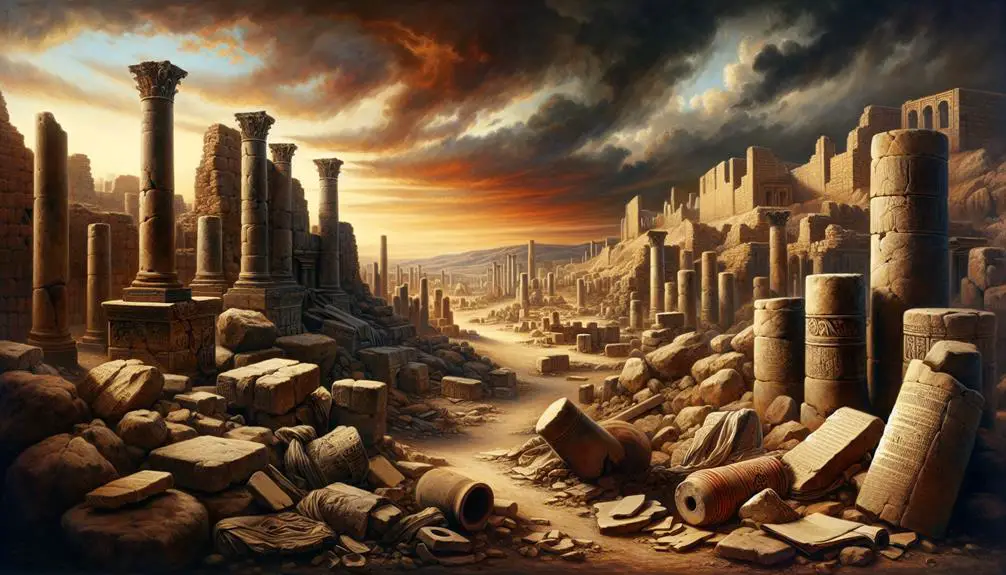
Understanding the historical context of Sodom is crucial for comprehending its significance in biblical narratives. Sodom was an ancient city mentioned in the Book of Genesis, notorious for its destruction due to the immorality of its inhabitants. The city's exact location and the historical veracity of the events described have been subjects of considerable debate and investigation, sparking considerable geographical speculation and archaeological findings.
Geographically, Sodom has been speculated to be located near the southern end of the Dead Sea, an area that aligns with the biblical descriptions of a fertile land well-watered before its destruction. This region, part of the modern-day Middle East, was historically known for its agricultural richness, which supports some of the narrative claims regarding Sodom's initial prosperity. Archaeological findings in the area have yielded mixed results, with some researchers proposing sites such as Bab edh-Dhra and Numeira as possible locations of Sodom due to their sudden abandonment in the Early Bronze Age, which could correlate with the biblical timeline of Sodom's destruction.
While no definitive archaeological evidence has unequivocally confirmed the biblical account of Sodom's existence and subsequent obliteration, these investigations have provided valuable insights into the life and times of the ancient Near East. The amalgamation of geographical speculation and archaeological findings continues to enrich our understanding of Sodom's historical context, offering a nuanced view of its potential location and the broader socio-economic conditions of the era. This scholarly pursuit underscores the complexities of reconciling ancient texts with historical and archaeological evidence, a task that requires careful analysis and an understanding of the multifaceted nature of ancient narratives.
Biblical Passages Examined
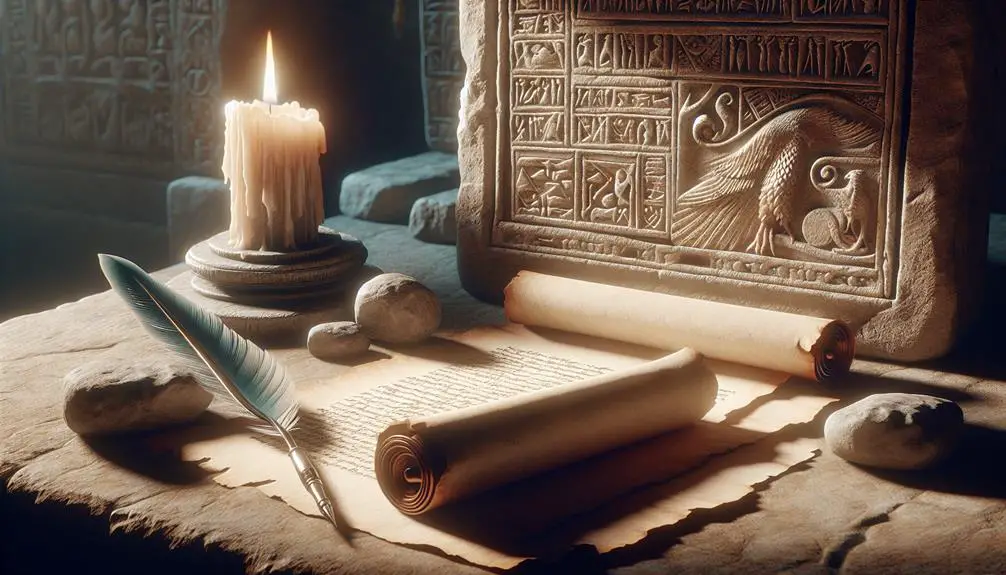
Having explored the geographical and archaeological backdrop of Sodom, it is imperative to scrutinize the biblical narratives that detail its inhabitants' behaviors and the city's ultimate fate. This examination reveals not only the explicit accounts within the scriptures but also highlights the complexities surrounding translation challenges and cultural misconceptions that have shaped interpretations of these texts over centuries.
- Genesis 18-19: The most direct account of Sodom is found in the Book of Genesis, chapters 18 and 19, where the cities of Sodom and Gomorrah are destroyed by divine intervention due to the wickedness of their inhabitants. The narrative's explicit mention of hospitality violations and intended violence against visitors has sparked debates on the nature of the sins committed by Sodom's residents.
- Ezekiel 16:49-50: This passage offers a broader perspective on the sin of Sodom, citing arrogance, apathy towards the poor and needy, and abominable acts as the reasons for its downfall. This contributes to the argument that Sodom's sins were multifaceted, challenging singular interpretations focused on sexual immorality.
- Translation Challenges: The original Hebrew and subsequent translations have presented difficulties in capturing the nuanced meanings of key terms and phrases. These challenges have fueled various interpretations, often reflecting the translators' cultural and theological biases.
- Cultural Misconceptions: Over time, the story of Sodom has been subjected to cultural misconceptions, with some interpretations emphasizing certain sins over others. This has led to a complex legacy where the historical and textual analysis is intertwined with evolving moral and ethical standards.
Interpretations Through Ages
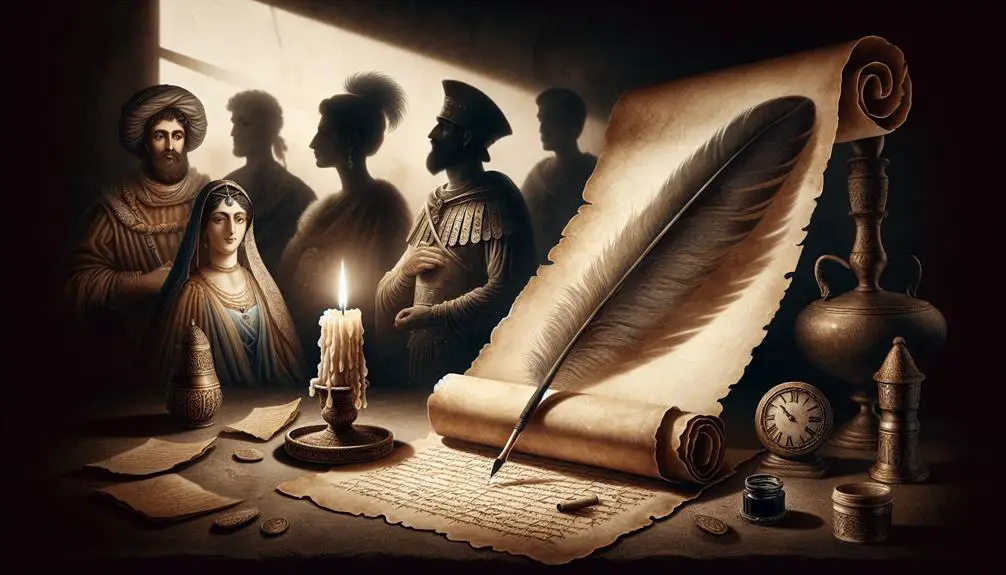
The interpretation of Sodom's narrative has undergone significant evolution over centuries, reflecting shifts in societal values, theological perspectives, and scholarly insights. Initially, the tale of Sodom in the Bible was primarily viewed through the lens of sexual immorality and divine judgment. However, as cultural shifts occurred, so too did the understanding of this story. These changes are not merely reflections of contemporary morality but also indicate a deeper engagement with the text that considers historical contexts, literary structures, and the possible intentions of the authors.
The linguistic evolution of key terms in the narrative has played a crucial role in its interpretation. As languages evolved, so did the meanings attributed to words and phrases within the story, leading to varied interpretations over time. Scholars have debated the original connotations of the Hebrew words used in the text, suggesting that interpretations based solely on later translations might miss nuances present in the original language.
Moreover, the impact of cultural shifts on the interpretation of Sodom's narrative cannot be understated. In certain periods, the emphasis was placed on the violation of hospitality norms, while in others, the focus shifted towards sexual ethics. This variation reflects broader societal changes and debates around morality, justice, and the nature of divine punishment.
Contemporary Views and Debates
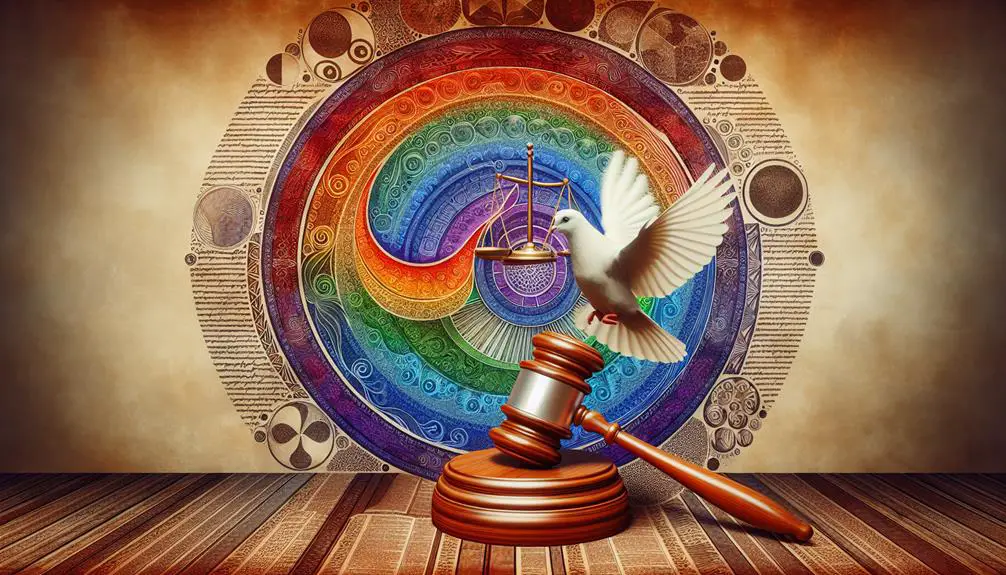
In contemporary discussions, the narrative of Sodom is at the heart of vigorous debates, reflecting a diverse range of interpretations and implications for modern theology and ethics. These debates often center around the interpretation of ancient texts in light of contemporary values, leading to a rich tapestry of views that challenge and inform our understanding of morality, justice, and human rights.
- Modern Misconceptions: A significant aspect of contemporary debates involves uncovering and addressing misconceptions that have arisen over time. Scholars argue that modern interpretations often diverge significantly from the historical and cultural contexts of the biblical narrative, leading to misunderstandings about its messages and intentions.
- Societal Impacts: The interpretation of the Sodom story has profound societal impacts, influencing legal, social, and ethical norms. Debates focus on how interpretations inform attitudes towards gender, sexuality, and morality, and the extent to which these interpretations should influence contemporary societal norms and laws.
- Re-interpretation Efforts: There is a growing movement among theologians and scholars to re-interpret the Sodom narrative in ways that align with contemporary understandings of justice and human rights. This involves rigorous examination of the text, its historical context, and its language to derive interpretations that challenge traditional views.
- Dialogues and Disagreements: The debates are characterized by a diversity of opinions, reflecting the complex nature of interpreting ancient texts. Dialogues between different religious and ethical perspectives contribute to a deeper understanding but also highlight the challenges of reaching consensus on such a multifaceted issue.
These discussions are vital, as they not only revisit ancient texts but also question how these narratives influence modern views on ethics, morality, and societal norms.
Ethical and Theological Implications
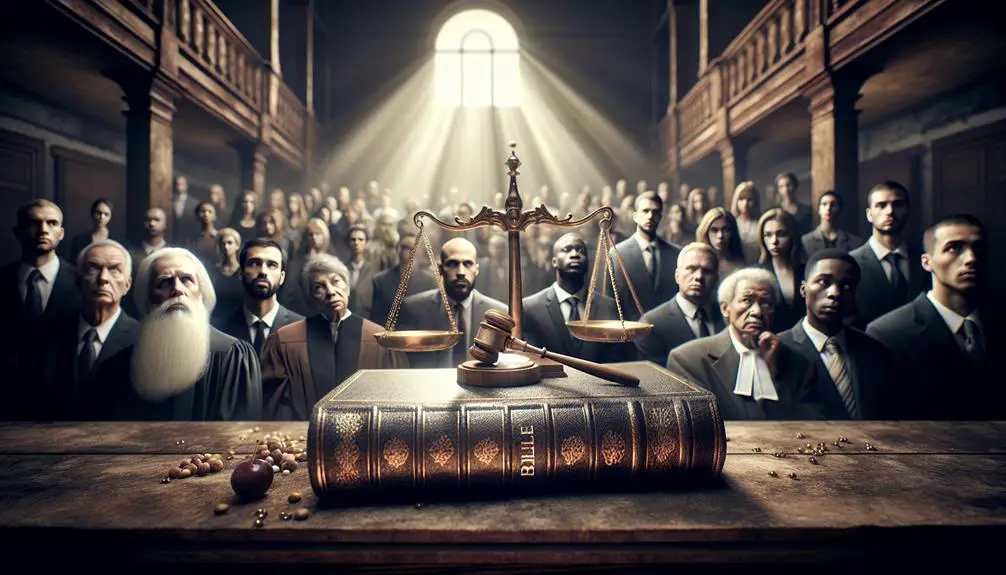
Exploring the ethical and theological implications, it becomes evident that the narrative of Sodom challenges contemporary and historical understandings of morality, justice, and divine judgment. This story, deeply ingrained in Judeo-Christian tradition, invites a complex dialogue between ancient scriptural interpretations and the principles of modern morality and cultural relativism.
Aspect |
Ancient Interpretation |
Modern Perspective |
|---|---|---|
Morality |
Divine command ethics |
Ethical pluralism |
Justice |
Retributive |
Restorative/transformative |
Divine Judgment |
Immediate and absolute |
Contextual/evolving |
Cultural Relativism |
Limited acknowledgment |
Integral consideration |
The narrative's ethical implications stretch beyond its historical context, prompting a reevaluation of how divine judgment is perceived and applied. Ancient interpretations often viewed the story as a straightforward condemnation of specific behaviors, aligning morality directly with divine command. However, modern perspectives tend to approach the narrative through the lens of ethical pluralism and cultural relativism, acknowledging the complexities of moral judgment within varied cultural contexts.
Furthermore, the story's theological implications raise questions about the nature of divine justice. Historically, the story was seen as exemplifying retributive justice, where punishment is meted out in direct response to wrongdoing. In contrast, modern interpretations increasingly lean towards a vision of justice that is restorative or transformative, emphasizing reconciliation and the possibility of redemption.
This shift towards understanding the narrative through the prisms of modern morality and cultural relativism reflects broader changes in societal attitudes towards ethics and theology. It underscores the ongoing dialogue between ancient texts and contemporary ethical frameworks, illustrating the dynamic nature of moral and theological interpretation.
Frequently Asked Questions
How Do Modern Legal Systems Across Different Cultures View Acts of Sodomy in Relation to Biblical Teachings?
Modern legal systems exhibit a diverse range of responses to acts traditionally labeled as sodomy, often reflecting broader cultural interpretations and values.
Legal comparisons across different jurisdictions reveal a spectrum from stringent prohibition to complete decriminalization.
These stances are not always directly influenced by biblical teachings but are instead shaped by contemporary societal norms, human rights considerations, and evolving interpretations of privacy and personal freedom.
This analytical overview underscores the complexity of correlating legal practices with religious texts.
In What Ways Have Popular Media and Literature Portrayed the Story of Sodom, Potentially Influencing Public Perception Outside of Religious Texts?
The portrayal of the story of Sodom in popular media and literature has significantly influenced public perception. Through cinematic adaptations, filmmakers have explored themes of morality and divine judgment, often embedding rich literary symbolism to provoke thought and discussion.
These representations vary widely, from literal interpretations to metaphorical explorations, each contributing to the collective understanding and interpretation of the narrative beyond strictly religious contexts, thereby shaping societal views on morality and ethics.
How Do Various Religious Denominations Reconcile the Biblical Narrative of Sodom With Modern Understandings of Human Rights and Sexual Orientation?
The reconciliation of traditional biblical narratives with contemporary views on human rights and sexual orientation poses complex challenges for various religious denominations.
Theological debates often center on interpretation variations, with some groups reexamining the story from a perspective that emphasizes hospitality and social justice over condemnation of specific behaviors.
For example, certain progressive denominations have moved towards a more inclusive understanding, reflecting a broader, more compassionate interpretation that aligns with modern human rights principles.
Are There Any Archaeological Findings or Historical Records That Challenge or Support the Traditional Biblical Narrative of Sodom?
The current inquiry explores whether archaeological discoveries or historical documents either question or affirm the conventional biblical account of Sodom.
Scholars have utilized geographical theories to hypothesize potential locations, while radiocarbon dating of artifacts from these sites aims to provide a chronological framework.
This analytical approach, grounded in scientific methodology, seeks to objectively evaluate the evidence, thus contributing to a scholarly and respectful discourse on the historical veracity of this narrative.
How Have the Stories of Sodom Been Utilized in Political or Social Movements, and What Impact Has This Had on Legislation or Societal Norms?
The utilization of Sodom imagery in political and social movements has significantly influenced both legislation and societal norms.
Through cultural appropriation, narratives rooted in ancient texts have been reinterpreted, often serving as a catalyst for discourse on morality and ethics.
This analytical examination reveals how such imagery has been strategically employed to shape public opinion, guide legislative efforts, and enforce societal norms, thus underscoring the profound impact of historical narratives on contemporary social and political landscapes.
Conclusion
In conclusion, the narrative surrounding Sodom in the biblical corpus has undergone extensive scrutiny and diverse interpretations across centuries, reflecting the evolving societal, ethical, and theological landscapes.
The delicate handling of the subject matter, employing euphemistic language, enriches the analysis, allowing a nuanced exploration of the texts.
This scholarly endeavor reveals the complexity of understanding ancient texts in contemporary times, urging a careful consideration of historical context, interpretive methodologies, and the implications of these ancient narratives on modern ethical and theological discourse.



Sign up